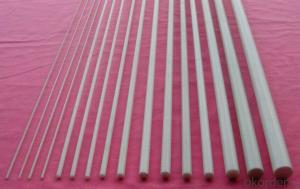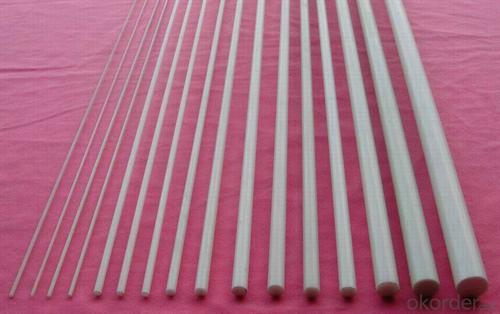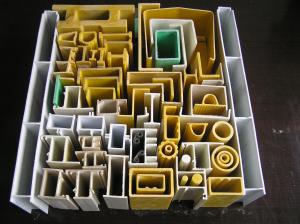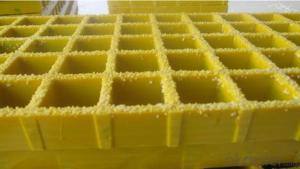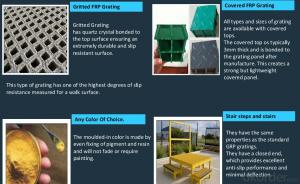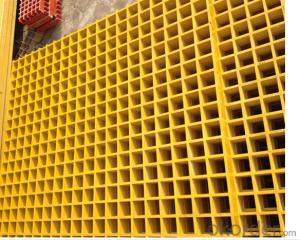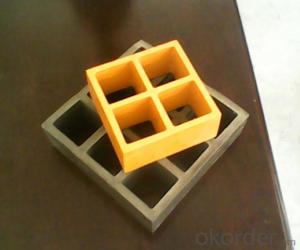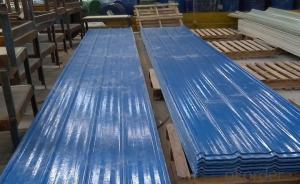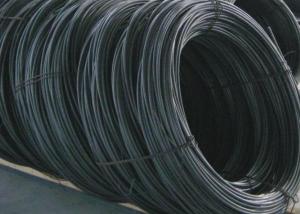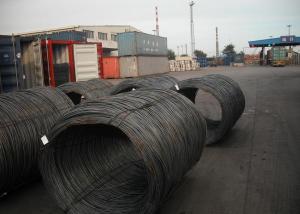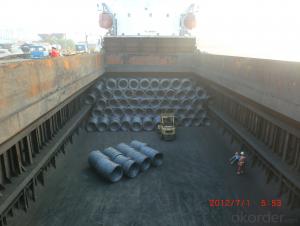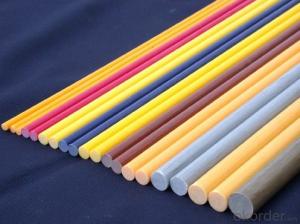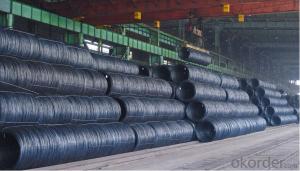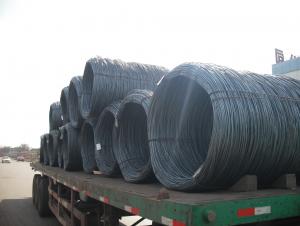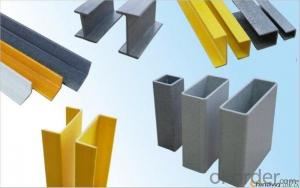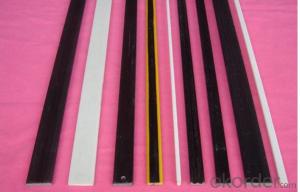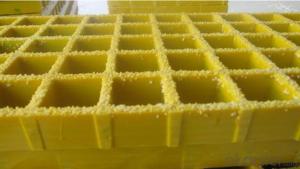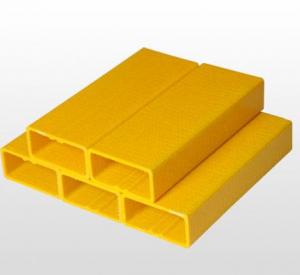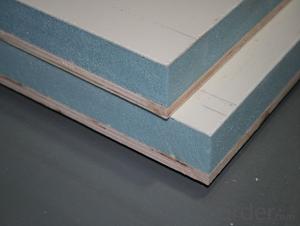High Strength FRP Rod
- Loading Port:
- China Main Port
- Payment Terms:
- TT OR LC
- Min Order Qty:
- -
- Supply Capability:
- -
OKorder Service Pledge
OKorder Financial Service
You Might Also Like
Specifications of High Strength FRP Rod:
1)Strong and Light FRP rod
2)Light weight FRP rod
3)High strength FRP rod
4)Surface is smooth
5)Factory directly sales
Introduction of High Strength FRP Rod:
FRP round rod (grp rod) is the thermosetting plastic products combining the reinforced materials of fiberglass roving, surfacing mat, polyester or vinyl ester etc. grp rod is a kind of composite material, but also a kind of composite structure. grp rod maybe designed as per applications, also per the required mechanical strength and appearance. It is made by pultrusion.
The round rod (grp rod) offers a unique combination of chemical resistance, size stability, high strength, and thermal/electric non-conductivity.
So the round rod (grp rod) can be used in the fields of chemical anti-corrosion, construction, electric insulation, power development and telecommunications etc.
- Q: Can FRP pultrusion profiles be used in agricultural structures?
- Agricultural structures can indeed utilize FRP pultrusion profiles. FRP pultrusion profiles, also known as Fiber Reinforced Polymer profiles, possess numerous advantages that render them suitable for agricultural purposes. To begin with, the corrosion resistance of FRP profiles is of utmost importance in the agricultural industry, given the exposure of structures to harsh environments and chemicals like fertilizers and pesticides. Unlike conventional materials such as steel or wood, FRP does not rust or decay, ensuring enduring performance in agricultural structures. Furthermore, FRP profiles are lightweight yet durable, facilitating easy handling and installation in agricultural applications. Their high strength-to-weight ratios enable efficient construction, thereby reducing the necessity for heavy machinery during the installation process. Moreover, FRP profiles exhibit exceptional mechanical properties, including high stiffness and impact resistance, which prove advantageous for agricultural structures subjected to heavy loads, vibrations, or machinery impact. In addition, FRP pultrusion profiles can be designed to resist UV radiation, thereby preventing degradation from prolonged exposure to sunlight. This quality makes them suitable for outdoor agricultural structures consistently exposed to the elements. Lastly, FRP profiles are non-conductive, a critical advantage in agricultural environments where electrical safety is paramount. This characteristic eliminates the risk of electrical hazards associated with conductive materials like steel. In summary, FRP pultrusion profiles offer a reliable and efficient solution for a variety of agricultural structures, such as greenhouse frames, livestock enclosures, irrigation systems, and storage facilities. Their corrosion resistance, lightweight nature, high strength, UV resistance, and non-conductivity make them an ideal choice for agricultural applications.
- Q: What does M23 grade of glass fiber reinforced plastic section mean?
- The basic components of the FRP profiles for resin and glass fiber (including cloth, mat etc.), which is based on the fiber (including glass fiber, carbon fiber, organic fiber and other metal and non metal fiber) as reinforcing material, resin (mainly epoxy resin. Polyester resin, phenolic resin) as crosslinking agent, auxiliary and other supporting materials (mainly accessories: release agent, curing agent, catalyst, sealing mould agent, light stabilizer, UV clean water, gel coat) composites. It has a series of excellent characteristics such as high temperature resistance, corrosion resistance, high strength, small specific gravity, low moisture absorption, small elongation and good insulation.
- Q: Can FRP pultrusion profiles be used in chemical storage tanks?
- Indeed, it is possible to utilize FRP pultrusion profiles in the construction of chemical storage tanks. These profiles are recognized for their exceptional resistance to corrosion, rendering them suitable for the storage of a wide array of chemicals. Moreover, their lightweight nature, strength, and impressive strength-to-weight ratio make them an optimal choice for the creation of robust and long-lasting chemical storage tanks. Furthermore, FRP pultrusion profiles can be tailor-made to fulfill specific design requirements, enabling flexibility in tank design and construction. In summary, due to their corrosion resistance, strength, and customization capabilities, FRP pultrusion profiles emerge as a dependable and cost-efficient alternative for chemical storage tanks.
- Q: The difference between polyurethane pultruded profiles and glass reinforced plastic profiles
- Pultrusion production of polyurethane pultruded profiles can be used in the new type of polyurethane material, the product can completely replace the FRP pultruded profiles, including polyurethane doors and windows profiles, tray, line guide groove, groove, polyurethane polyurethane tube and other molding parts.
- Q: Are FRP pultrusion profiles resistant to high-pressure water jets?
- FRP pultrusion profiles have a general resistance to high-pressure water jets. Their high strength-to-weight ratio, corrosion resistance, and durability make them suitable for applications involving water and harsh environments. The pultrusion manufacturing process ensures thorough resin impregnation of the fibers, resulting in a dense composite material. This density provides high resistance to water penetration, protecting the material from damage by high-pressure water jets. Additionally, FRP pultrusion profiles exhibit excellent chemical resistance, including resistance to water. This ensures that the profiles will not degrade when exposed to high-pressure water jets for extended periods. It is important to note that the specific resistance of FRP pultrusion profiles to high-pressure water jets may vary depending on the resin and fiber combination used. To obtain detailed information about the resistance of specific profiles in a given application, it is recommended to consult the manufacturer or supplier.
- Q: Can FRP pultrusion profiles be used in telecommunications towers?
- Telecommunications towers can indeed utilize FRP (Fiber Reinforced Polymer) pultrusion profiles. These profiles possess several advantageous features that render them suitable for this particular application. Firstly, FRP profiles possess a lightweight yet robust nature, facilitating effortless installation and reducing the overall structural weight of telecommunications towers. This characteristic is crucial as it aids in minimizing the burden imposed on the tower structure. Secondly, FRP pultrusion profiles exhibit exceptional resistance to corrosion, making them ideally suited for outdoor applications such as telecommunications towers that are constantly exposed to diverse environmental conditions. Unlike conventional materials like steel or wood, FRP profiles do not succumb to rust, rot, or deterioration when subjected to moisture, UV radiation, or chemicals typically encountered in outdoor environments. Additionally, FRP pultrusion profiles offer excellent electrical insulation properties, a critical aspect for telecommunications towers. These profiles are non-conductive, thereby reducing the likelihood of electrical interference or short circuits that might disrupt the tower's communication systems. Moreover, FRP pultrusion profiles can be produced in various shapes and sizes, thereby enabling customization and meeting the specific design requirements of telecommunications towers. This versatility facilitates seamless integration and compatibility with other components of the tower. Overall, the combination of lightweight composition, high strength, corrosion resistance, electrical insulation, and customization options renders FRP pultrusion profiles an advantageous and viable selection for utilization in telecommunications towers.
- Q: Can FRP pultrusion profiles be used in automotive applications?
- Yes, FRP pultrusion profiles can be used in automotive applications. They offer several advantages such as high strength-to-weight ratio, corrosion resistance, and design flexibility. Additionally, FRP pultrusion profiles can withstand harsh environmental conditions, making them suitable for various automotive components, including body panels, structural supports, and interior parts.
- Q: What are the typical lifespan of FRP pultrusion profiles?
- The lifespan of FRP pultrusion profiles can vary depending on factors including material quality, environmental conditions, and specific application. On average, these profiles last 25 to 30 years. FRP pultrusion profiles are renowned for their durability and resistance to corrosion, rot, and UV radiation, which contributes to their extended lifespan. The use of top-notch resins and fibers during manufacturing ensures their ability to withstand harsh conditions and maintain structural integrity over time. It's worth mentioning that proper installation, regular maintenance, and adherence to usage guidelines can further increase the lifespan of FRP pultrusion profiles. Additionally, exposure to extreme temperatures, chemicals, and mechanical stress can impact their longevity. In summary, FRP pultrusion profiles provide a reliable and long-lasting solution for various applications in industries like construction, infrastructure, transportation, and marine.
- Q: How do FRP pultrusion profiles compare to traditional building materials?
- FRP (Fiber Reinforced Polymer) pultrusion profiles offer several advantages over traditional building materials. Firstly, FRP profiles are extremely lightweight yet highly durable, making them ideal for applications where weight reduction is critical, such as in aerospace or automotive industries. In contrast, traditional materials like steel or wood are much heavier and may require additional support or reinforcement. Another key advantage of FRP pultrusion profiles is their exceptional strength-to-weight ratio. They possess high tensile and flexural strength, surpassing that of many traditional materials. This strength allows FRP profiles to provide excellent structural support while minimizing the overall weight of the structure. Furthermore, FRP pultrusion profiles are corrosion-resistant, making them suitable for environments prone to moisture, chemicals, or extreme temperatures. Unlike steel or wood, FRP does not rust or rot, hence requiring minimal maintenance and extending the lifespan of the structure. In terms of design flexibility, FRP profiles offer a wide range of shapes and sizes, enabling architects and engineers to create complex and intricate structures. Traditional materials often have limitations in terms of design possibilities and may require additional fabrication steps to achieve the desired shape. Additionally, FRP pultrusion profiles are electrically non-conductive, making them an ideal choice for applications where electrical insulation is required. Unlike metals, FRP does not conduct electricity, reducing the risk of electrical accidents. Lastly, FRP profiles are environmentally friendly as they can be made from recycled materials and are fully recyclable themselves. In contrast, traditional materials like steel or concrete require significant energy consumption and contribute to carbon emissions during their production. Overall, FRP pultrusion profiles offer numerous advantages over traditional building materials, including lightweight, high strength, corrosion resistance, design flexibility, electrical insulation, and environmental sustainability. These benefits make FRP profiles a compelling choice for a wide range of industries and applications.
- Q: Can FRP pultrusion profiles be used in the construction of swimming pool enclosures?
- Yes, FRP (Fiber Reinforced Polymer) pultrusion profiles can be used in the construction of swimming pool enclosures. FRP pultrusion profiles are known for their excellent strength-to-weight ratio, corrosion resistance, and durability, making them an ideal choice for outdoor applications like swimming pool enclosures. FRP pultrusion profiles are made by pulling fiberglass rovings through a resin bath and then through a heated die, resulting in a continuous profile of uniform shape and strength. This manufacturing process ensures that the profiles are strong, stiff, and lightweight, making them easy to handle and install. In the construction of swimming pool enclosures, FRP pultrusion profiles can be used for various structural elements such as beams, columns, trusses, and panels. These profiles can provide the necessary strength and support while also offering resistance to corrosion, moisture, and UV radiation, which are common challenges in a swimming pool environment. Additionally, FRP pultrusion profiles can be customized to meet specific design requirements, allowing for flexibility in creating unique and aesthetically pleasing swimming pool enclosures. They can be fabricated in a variety of shapes, sizes, and colors, making it possible to achieve the desired architectural look and feel. Overall, FRP pultrusion profiles offer a reliable and long-lasting solution for constructing swimming pool enclosures, providing the necessary strength, durability, and resistance to environmental factors. Their lightweight nature also makes them easier to handle and install, reducing construction time and costs.
Send your message to us
High Strength FRP Rod
- Loading Port:
- China Main Port
- Payment Terms:
- TT OR LC
- Min Order Qty:
- -
- Supply Capability:
- -
OKorder Service Pledge
OKorder Financial Service
Similar products
Hot products
Hot Searches
Related keywords
